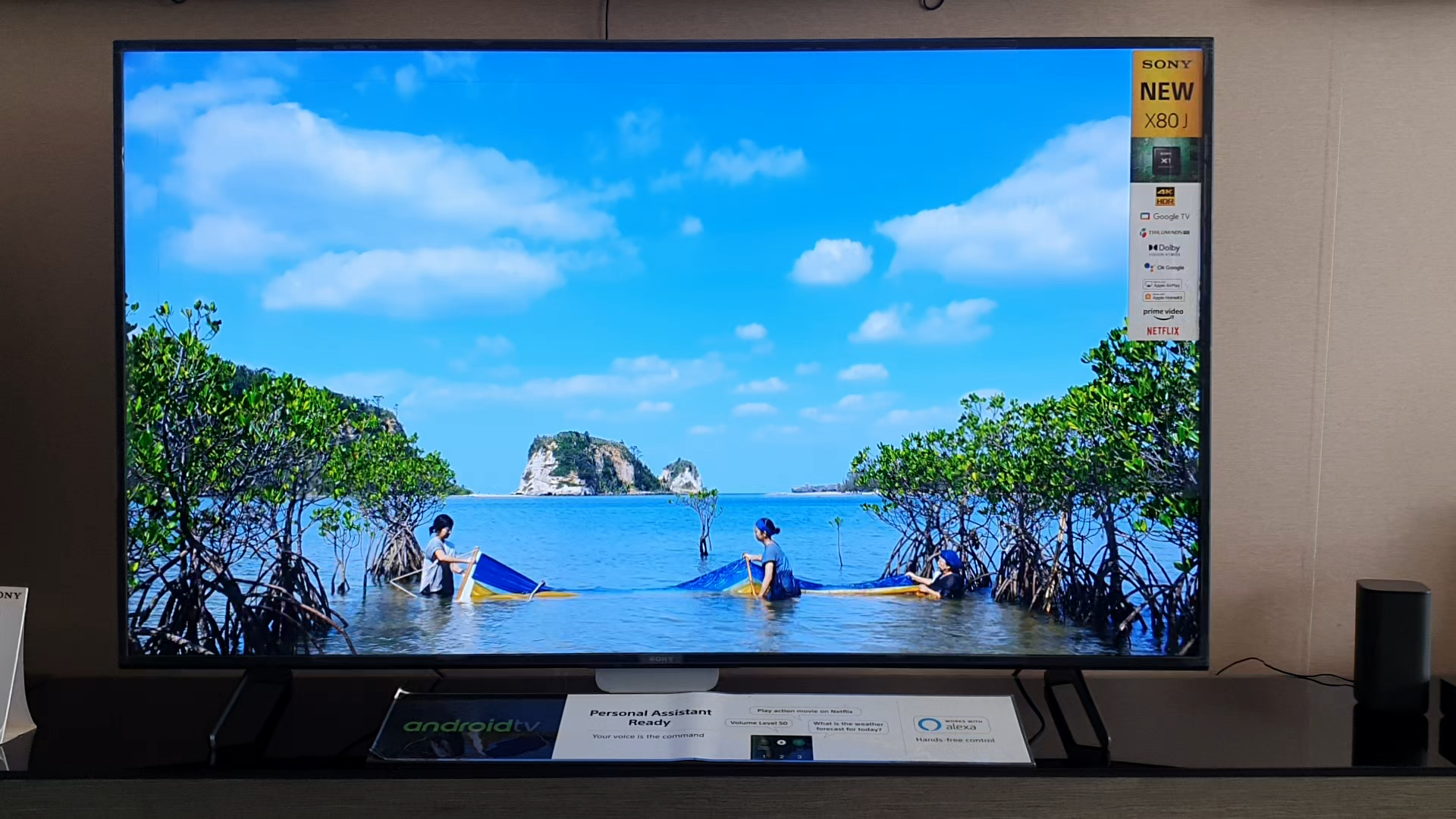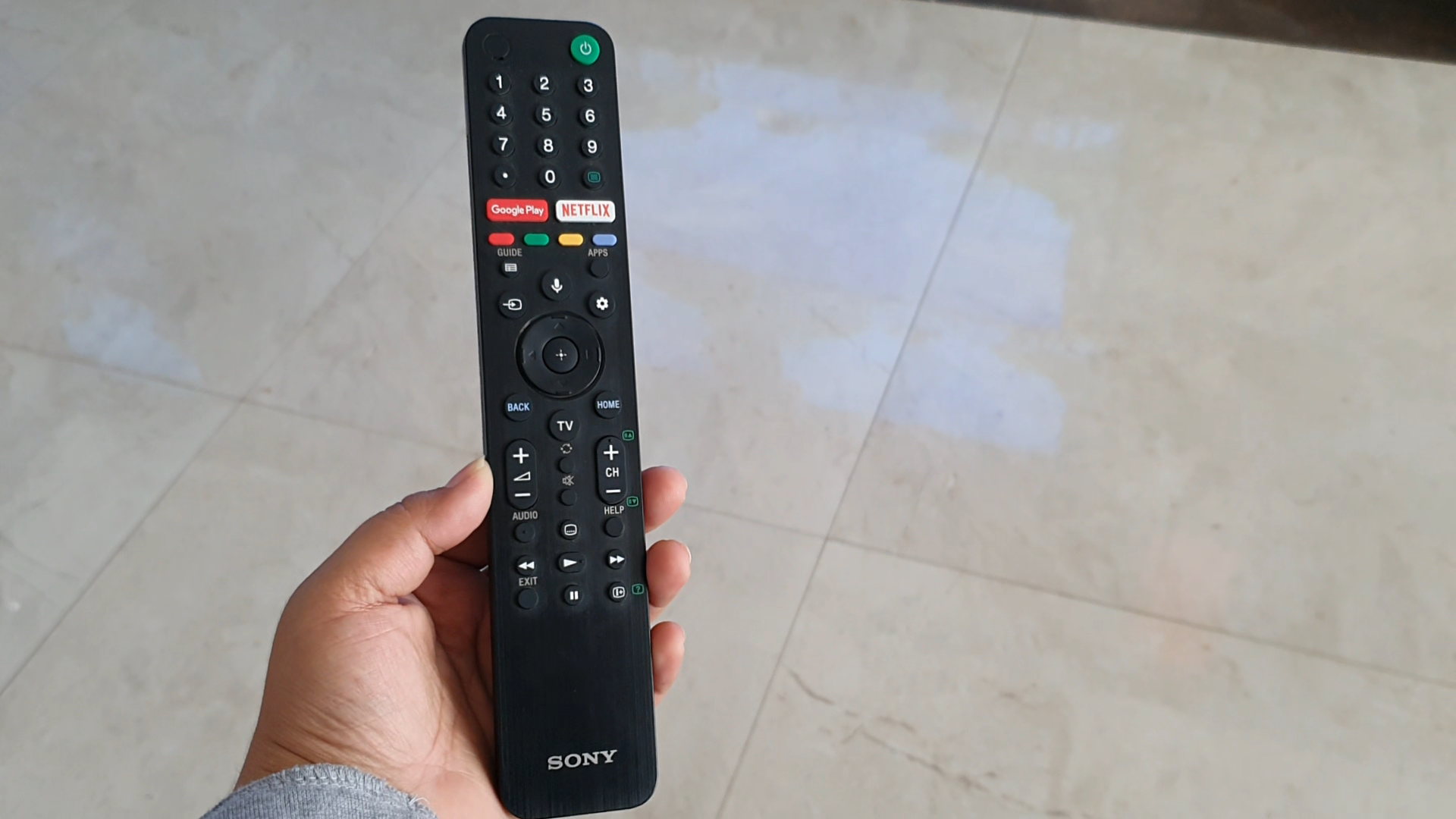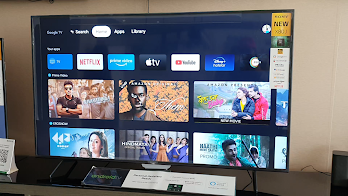Is Sony X80J, A Worthy Successor To Last Year's Model Sony X8000H?
In the month of April this year, Sony launched its 4k Android Smart TV X80J, which replaces the last year's model X8000H. This article will give you an insight on whether Sony X80J is a worthy successor to Sony's last year's most sought-after TV X8000H or not. I will also elaborate upon the aspects in which these two TVs are better than each other.
 |
| Sony X80J |
We have reviewed this TV on our YouTube Channel Techiebeez India, to watch that video CLICK HERE. The TV that we got to review was the 65-inch variant of the Sony X80J.
You can purchase both these Sony X80J from Here:
Sony X80J 65 Inches Buy Now
Sony X8000H Buy Now
This is an entry-level model of Sony, which replaces the last year's model X8000H. Though this TV has been fully constructed using plastic material, its built quality is decent. Nowadays, when most new TVs are being launched with bezel-less design, Sony has sustained its earlier thick Bezel designing in many of its models. Despite all these drawbacks, overall, the TV looks smart and elegant. The TV gets the same designing as on Sony X8000H. It comes with a grey bezel and a grey slim-blade designed table-top stand.
On the left side, at the back, are 2 USB ports, 4 HDMI ports, 1 Optical port, a composite video input port, a headphone jack, and an Ethernet port. The TV comes with the same standard remote, which came with the last year's model, Sony X8000H. The remote carries button for Google Assistant, Prime Video, Disney Hotstar, YouTube, and Netflix. The TV comes with dual-band Wi-Fi and Bluetooth version 4.2. All compatible devices can be wirelessly connected to this TV, though, alike X8000H, you still cannot connect any Bluetooth soundbar with this TV without any external software support. HDMI CEC is present on it and it also comes with an HDMI eARC port, through which, if you connect this TV to a Home Theatre, then you will get a quality boost in the audio output, in comparison to any HDMI ARC port.
Sony X80J supports HDR10, Dolby Vision, and HLG. It has DLED backlighting and comes with frame dimming. The peak brightness of the TV is around 380 Nits and the refresh rate is 50 Hz. This TV comes with a hard panel which might be, either, ADS or IPS, the company has not mentioned the panel type anywhere. ADS and IPS panels have many similarities, both these panels give a wide viewing angle. X80J comes with 4k HDR Processor X1, 4k X-Reality PRO, Triluminos PRO, object-based HDR Remaster, and MotionFlow XR.
 |
| Sony X80J |
 |
| Sony x80j remote |
X80J comes with Android 10 and Google TV, which is a new feature introduced in 2021. Google TV is a new interface of Android TV only, which you can equate with the Patchwall UI of Mi TVs. The operating system of the TV is Android only, it is just that you get an additional interface, where you get all your favorite contents in one place, which makes the browsing experience pretty simple. For example, if you command Google Assistant to open Horror movies, it will display all horror movies on the screen across all applications that are downloaded on the TV. You don't need to open individual applications and search for a movie genre.
So this was about the TV's features and specifications, now, let's talk about its real on-ground performance.
In this TV, Sony has for the first time introduced the Triluminos PRO Technology, which is an upgraded version of their old Triluminos Technology. Already Sony TVs come with vibrant colors, and, with this technology, the company has attempted at widening the color gamut even further, in order to bring more accuracy in colors. However, this difference is not that striking. If you watch a TV with Triluminos PRO Technology, you will not be able to mark the deviation in color reproduction from Sony's earlier Triluminos Technology TVs.
This difference is only visible if you watch Sony's Triluminos Technology TV side by side this TV. The color reproduction of this TV is certainly very good and after tweaking some settings, the colors look pretty accurate. Though at times you do get to see some dirty screen effect, here and there on the screen, the Grey screen uniformity of this TV is good. As it comes with an IPS-type panel, the Blacks of this TV are not good. Even the screen uniformity of Blacks on this TV is poor. However, the viewing angle is good, which is suitable for use by a big family. The best performance of this TV can be had in a lighted or moderately lighted room. In a dark room, Blacks appear grey.
 |
| sony x80j picture quality |
The brightness of the TV though not good is satisfactory. While watching SDR contents, the picture looks bright enough, however, HDR contents don't show much improvement in brightness over the SDR contents. HDR videos lack details in highlights that are generally visible on a TV with high brightness. Though Dolby Vision contents look good on this TV, X80J fails to give that optimum performance, which a high brightness TV can exhibit. As it comes with an IPS-type panel, its contrast ratio is low and lack of Local Dimming on this DLED TV leaves no other alternative for the enhancement of the contrast ratio. Frame dimming does not seem to play any role in increasing the contrast.
While watching normal contents, motion blur is not much evident, however, during fast action scenes, the blur cannot be avoided. But definitely, the motion blur on this TV is lesser than any budget TV or Samsung & LG TVs having a refresh rate of 50 or 60 Hz.
This TV comes with 16 GB storage, RAM is not mentioned anywhere, but the Google TV UI of this TV is pretty smooth. On this TV you get a pretty fast, smooth, and easy browsing experience. Casting is smooth on this TV, irrespective of whether it is an Android or Apple device. The TV comes with a pretty low input lag and fast response time, which makes it a good option for gaming.
 |
| sony x80j OS |
Coming to upscaling; the picture upscaling capability of this TV is good, low-resolution videos get upscaled and play in a better resolution.
Now, is the time to compare this TV to Sony's last year model X8000H! Firstly, I will tell you in what aspects Sony X80J is better than Sony X8000h.
PROS Of Sony X80J
🔸 Sony X80J comes with HDMI eARC, which goes missing on Sony X8000H.
🔸 Sony X80J gives a wider coverage of the NTSC color gamut than Sony X8000H, which makes the color reproduction even better.
🔸 Sony X80J comes with Android 10, whereas, Sony X8000H still runs on the Android 9.0 operating system.
🔸 Sony X80J has an extra Google TV UI, which makes the browsing experience simple, fast, and smooth. On the other hand, Sony X8000H lacks this extra UI.
🔸 The lower input lag and better response time of X80J makes it a little more suitable for gaming than X8000H.
Now, coming to the Pros of Sony X8000H;
PROS Of Sony X8000H
🔸 It is brighter than X80J.
🔸 The viewing angle of X8000H is a tad better than X80J.
🔸 As the brightness of X8000H is better than X80J, its SDR and HDR performance are a tad better than X80J.
Conclusion:
In the end, I will just say that because of lower brightness, X80J is a little inferior to X8000H in picture quality, still, its price is higher, so opt for X80J only if Android 10 and Google TV charms you. The difference between Triluminos Pro and Triluminos is not that evident, so investing more in X80J will not be a prudent decision. Movies and shows will look better on Sony X8000H. But if you are a gamer, X80J will be a little better option for you. As a monitor, X80J is a better option.
....👈







2 Comments
This comment has been removed by the author.
ReplyDeleteThe Sony X80J's IPS-type panel struggles to produce deep blacks, often resulting in a grayish appearance in dark rooms. A black screen highlights this limitation, making it clear that the TV's contrast ratio is lower compared to OLEDs or VA panels, affecting its performance in dim lighting.https://blackscreen.onl
ReplyDelete